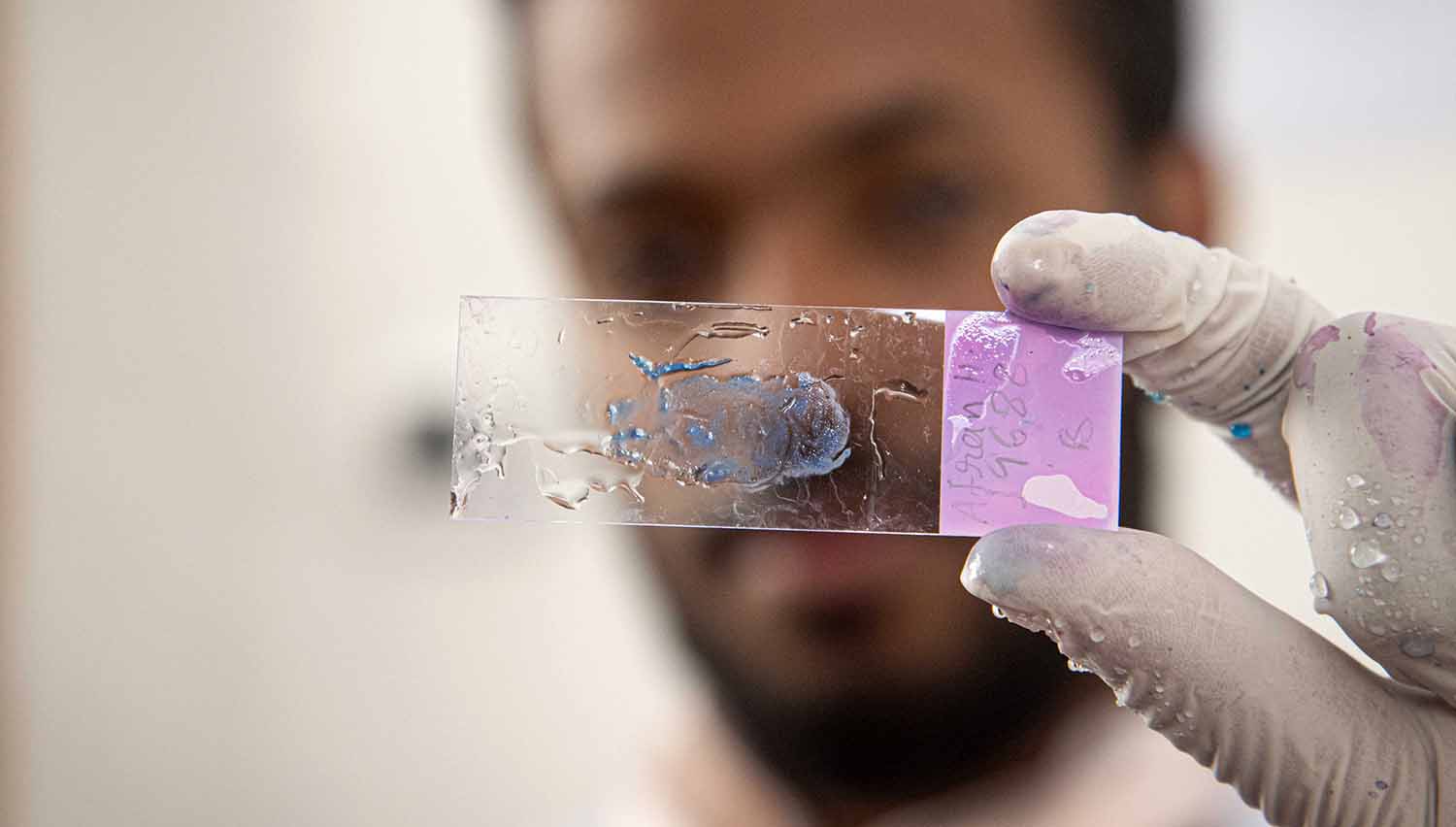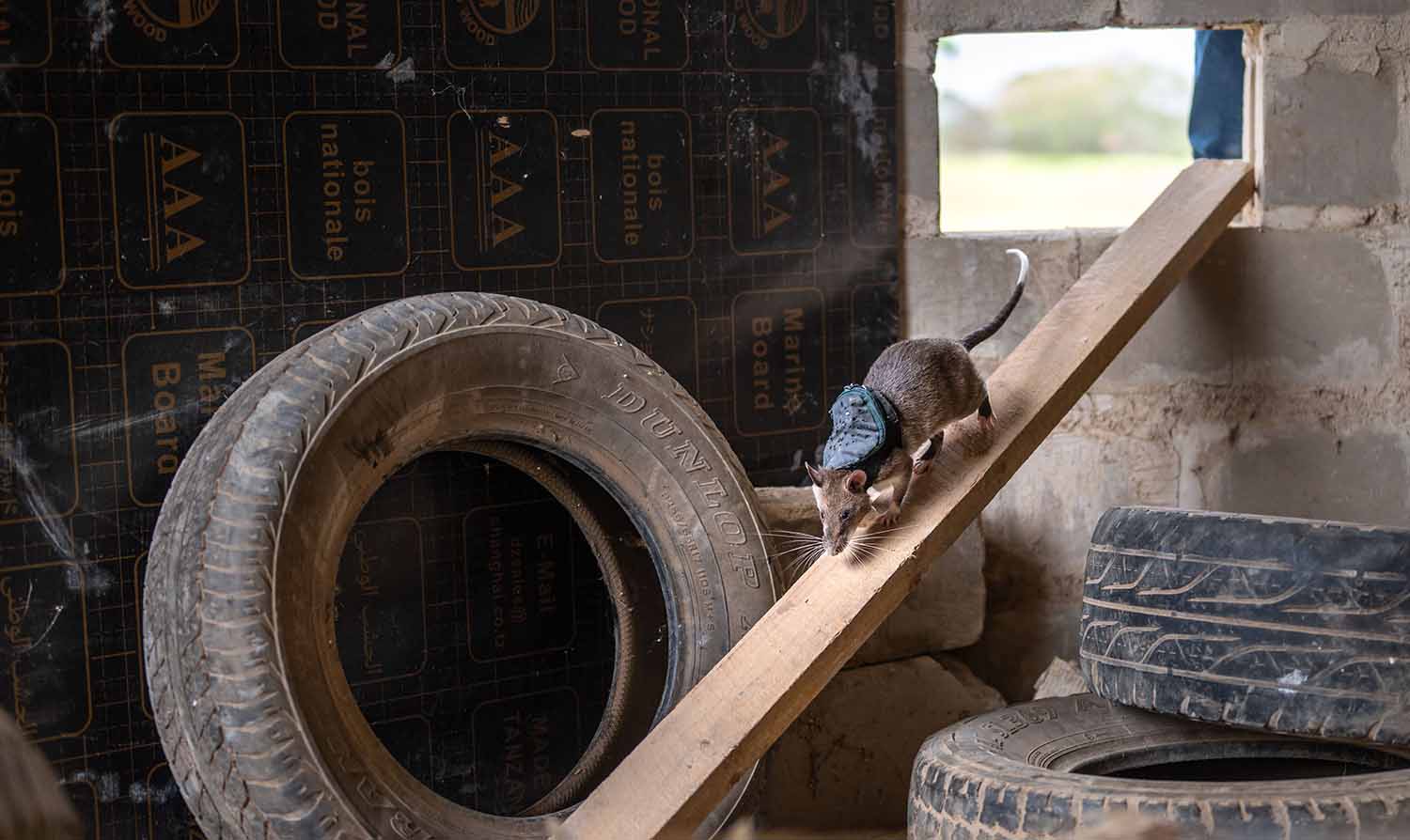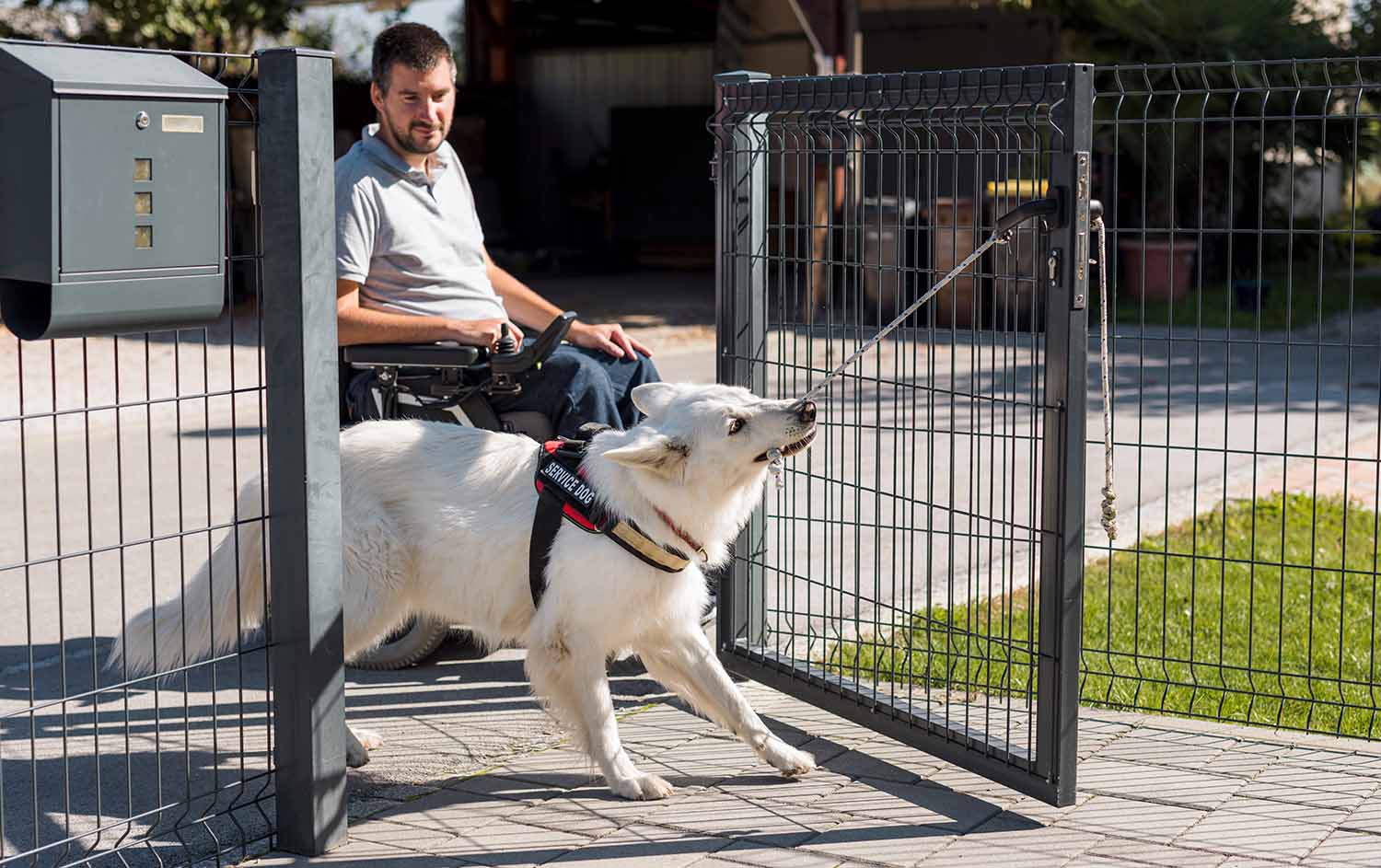Lab Rats Save Lives
Lab rats are being trained to detect a deadly disease called tuberculosis.

Courtesy of APOPO
An APOPO rat that has been trained to detect tuberculosis sniffs saliva samples for signs of the disease.
When you hear the term “lab rat,” you may picture a rat running through a maze while scientists in lab coats take notes for research. Specially trained lab rats in Tanzania and Mozambique have a different job. They help their human colleagues detect a deadly infectious disease.
The African giant pouched rat isn’t just the largest rat species in the world. It also has a keen sense of smell, which people have realized could be useful for detecting things that humans and machines cannot. An organization called APOPO has trained some of these rats to detect tuberculosis (TB), a bacterial disease that affects the lungs and causes coughing, difficulty breathing, and chest pains.
TB spreads quickly and can be deadly if left untreated. The World Health Organization says that 10 million people around the world get sick with TB each year. Fortunately, medicine and antibiotics can treat TB if it is caught in time. This is where the helpful lab rats, which APOPO calls HeroRATs, come in.

A lab technician shows a slide with a saliva sample that is being used in APOPO’s tuberculosis detection program.
Here’s how the rats do their job: a doctor sends patient saliva samples to a laboratory for testing, where human lab technicians perform an initial screening with bacteria-detecting tools. Afterward, the HeroRATs do a sniff test of the samples to “double check” whether any TB-containing samples have been missed. In many cases, the rats can identify samples where the bacterial amounts are too small for conventional laboratory tools to detect.
As a result, the rats have been successful in helping humans identify TB patients who would otherwise be missed. APOPO reported that its HeroRATs increased the TB detection rate by 48 percent in facilities in Tanzania. In other words, the HeroRATs detected an additional 2,176 TB patients, meaning thousands of sick people received treatment for the disease so that they would not spread it to others.

An APOPO employee holds one the African giant pouched rats that have been trained to detect signs of danger.
Since APOPO began this work, HeroRATs have detected enough missed cases to prevent more than 300,000 possible TB infections.
“One untreated person can infect 10-15 people, [so] multiply that by 24,000 people correctly treated, who had been missed through regular tests,” Joseph Soka, a manager at APOPO’s laboratory in Dar es Salaam in Tanzania, told The Guardian. “These were not just samples, these were lives saved.”
Experts don’t expect the HeroRATs to fully replace conventional TB detection methods, but the animals are showing promise as a tool to help the human experts identify patients and fight the spread of disease.



